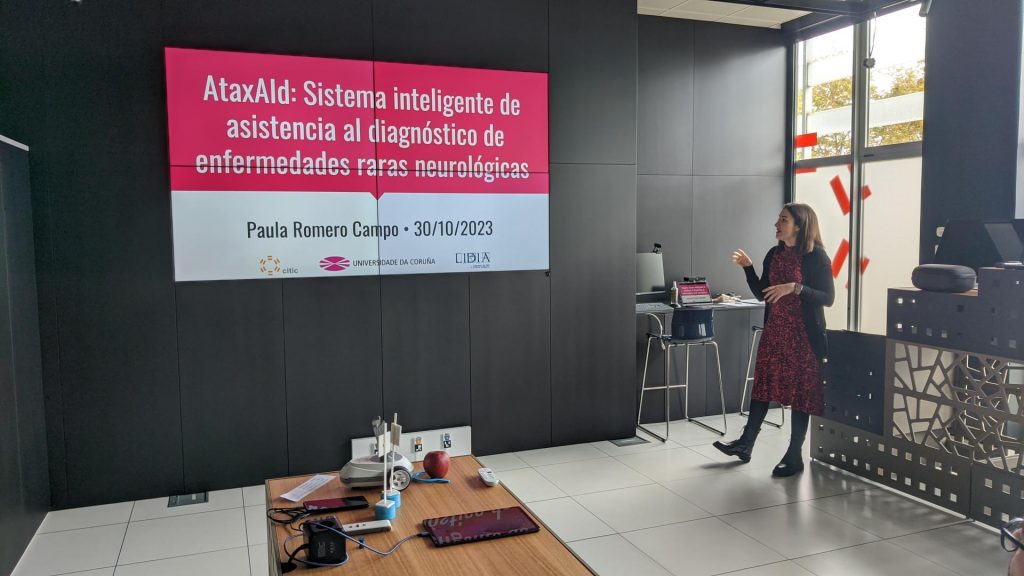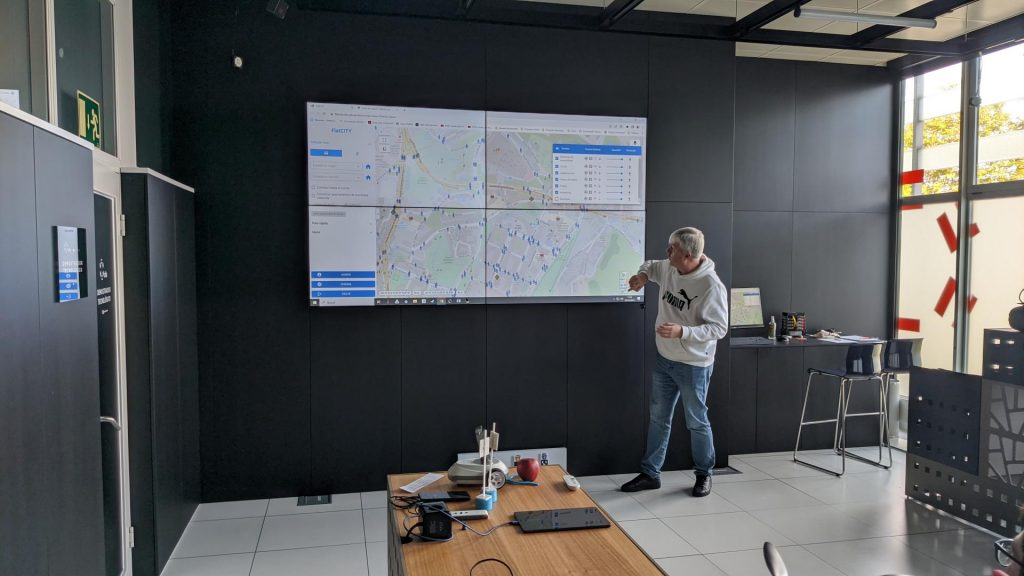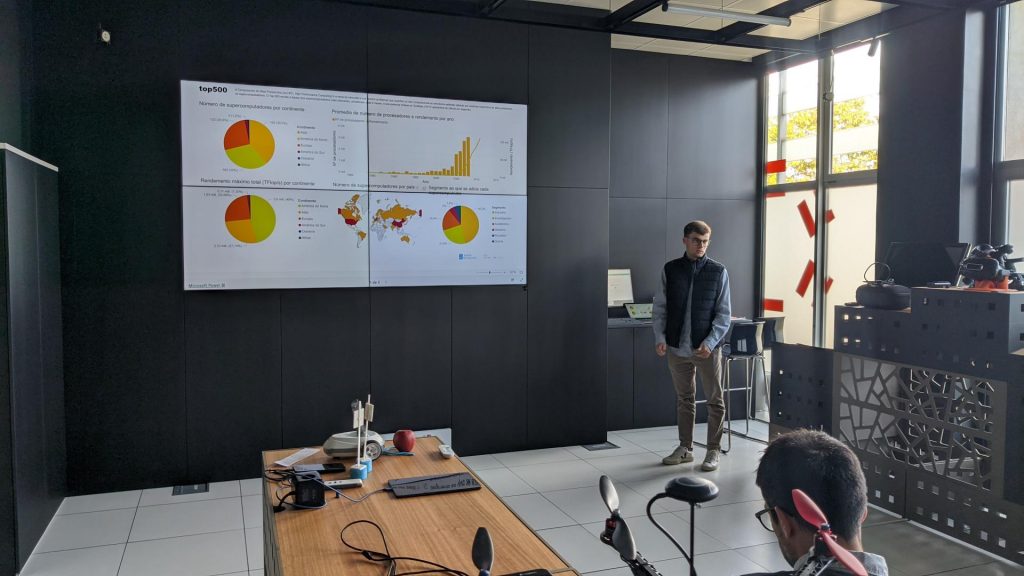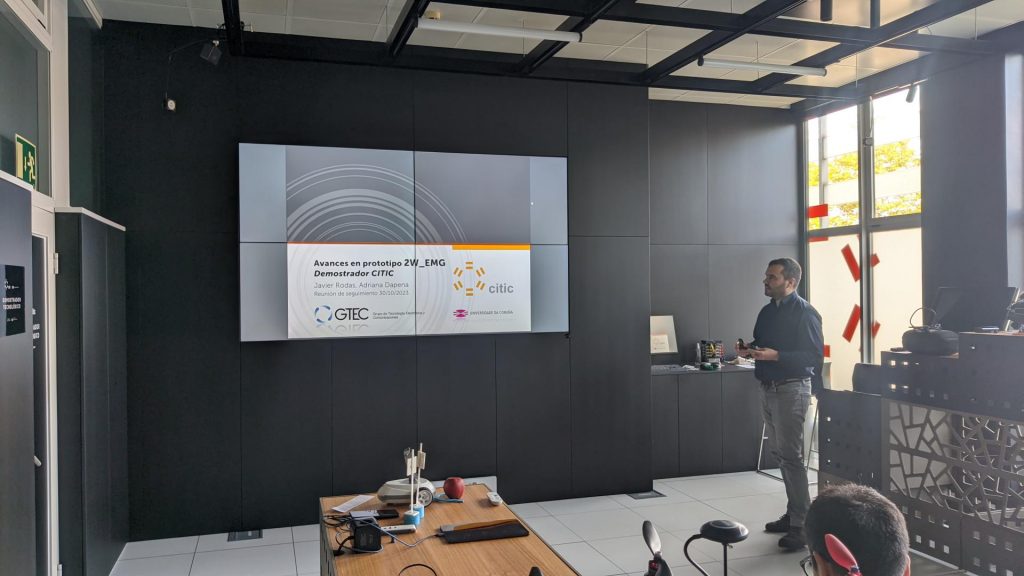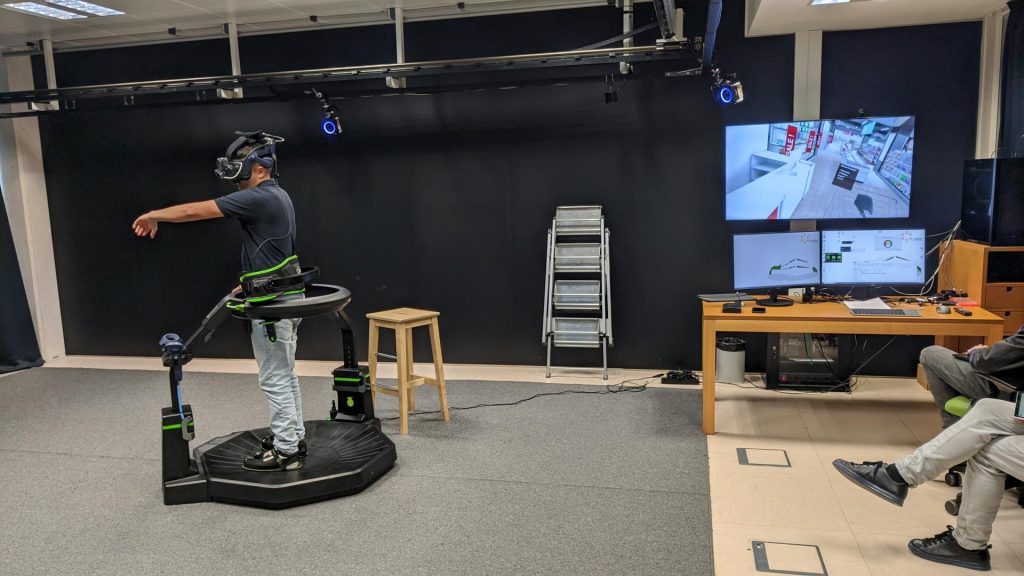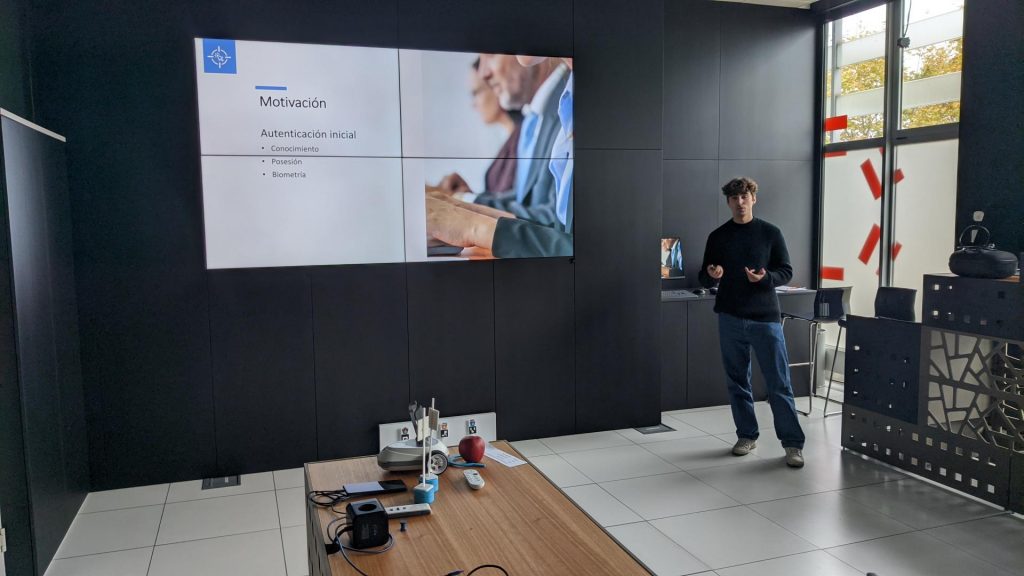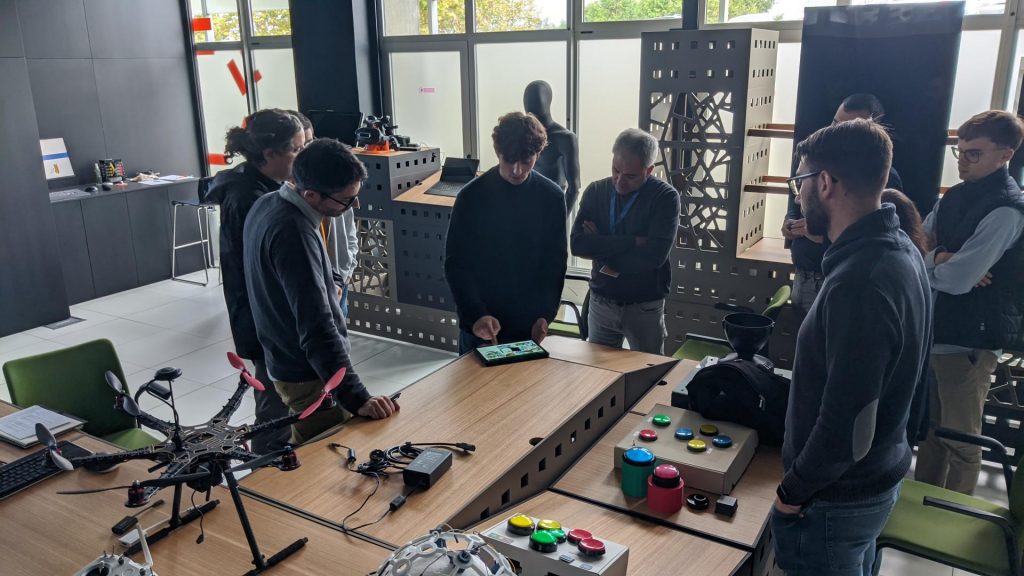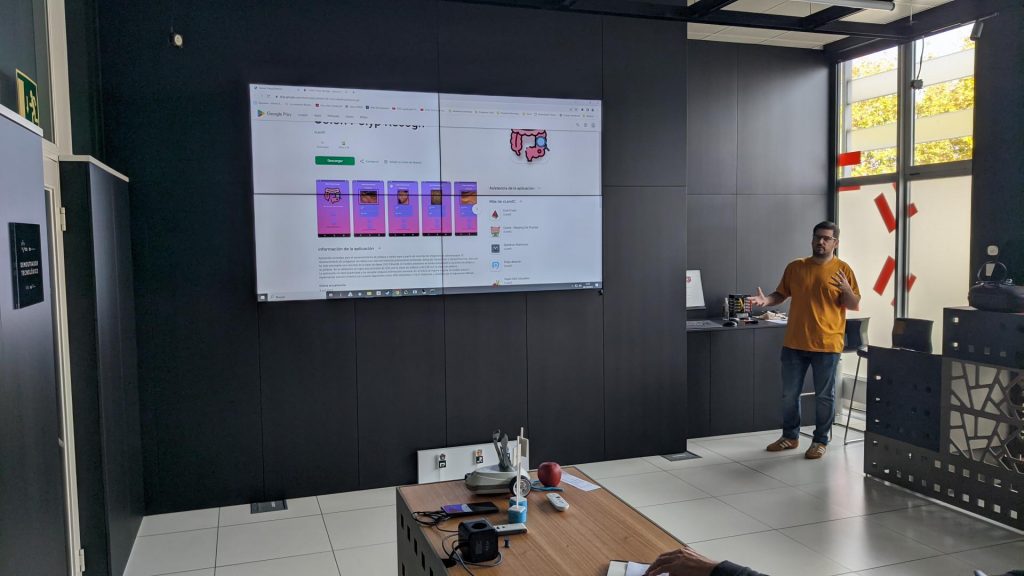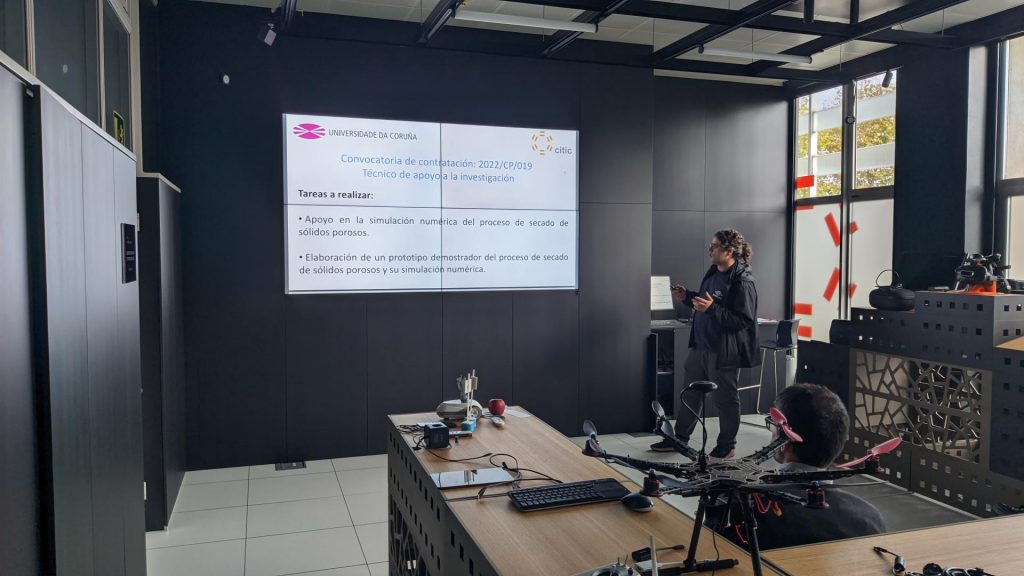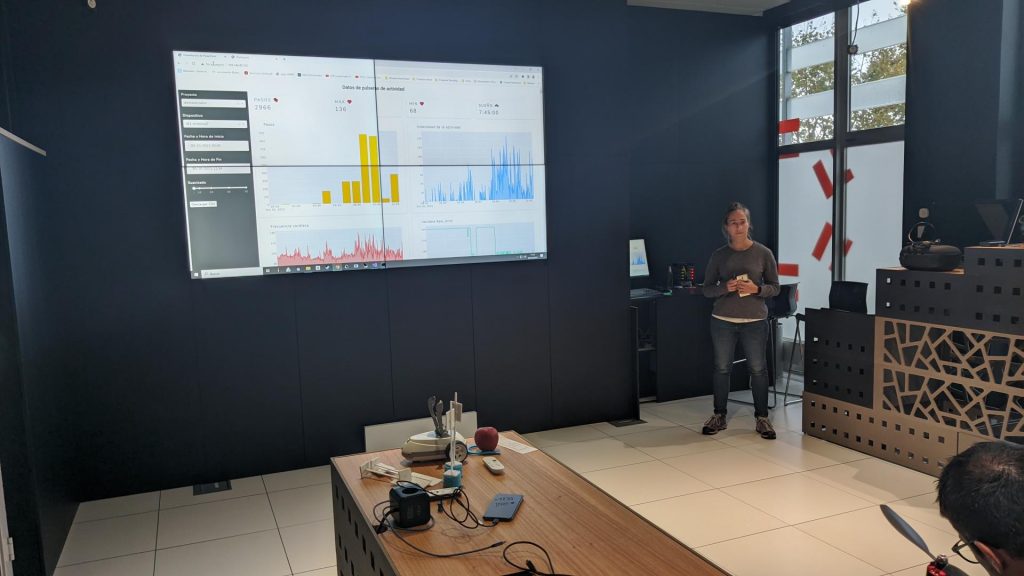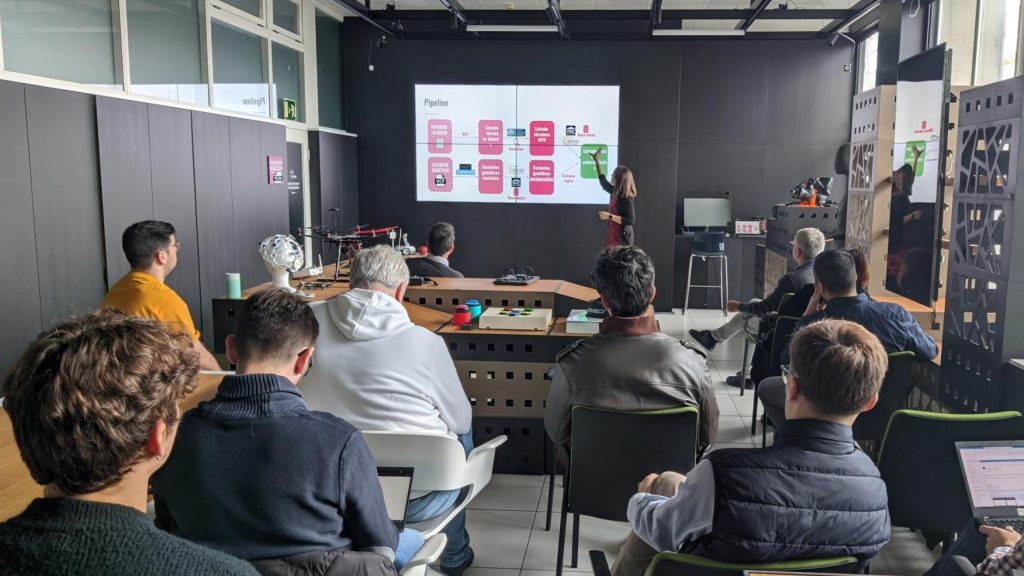
CITIC celebrates prototype presentation day for the Technology Demonstrator
On Monday, October 30, the presentation of the prototypes for the CITIC Demonstrator took place in which, following the event held last July, 9 researchers from the center showed the models of their projects in operation in order to install them in the Demonstrator Room.
The creation of these prototypes responds to CITIC’s commitment to showcase the results of the center’s priority research lines. In this context, in February 2023 the call “Support to the strategic lines of CITIC for the creation of prototypes that allow the visibility of research results” was launched, which financed the hiring of research personnel, all of them attached to different research groups of the University of A Coruña. In July of this year a first event was held in which the participants showed the progress of their work.
To open the day, Paula Romero presented her work “Intelligent system to assist in the diagnosis of rare neurological diseases”. It consists of the development of the AtaxAId application, which has the capacity to help medical personnel make more accurate and faster diagnoses, by extracting information from medical reports and a patient’s genetic file to compare it with medical repositories of rare diseases. The project focuses on ataxia, a motor disorder that affects the ability to coordinate the performance of voluntary movements, and paraparesis, which is decreased strength in the lower or upper limbs. In AtaxAId, medical personnel enter a description of the patient’s symptoms, either in English or Spanish, and the system returns a list of possible diagnoses.
Miguel Luaces, in second place, spoke about his work “Friendly barrierLess Adaptable City Demo A Coruña (FLATCity)” in which he develops an application for people with different motor skills to find the best route to move around cities and make them, in this way, more accessible. The prototype was shown on a map of the city of Santiago de Compostela, in which elements such as crossings, pedestrian crossings, roads or points of interest can be checked. In its proposal the routes are divided into three phases: the walking route from the initial point to where the user’s car is located, the route by car and, finally, the route from where the suggested reduced mobility parking space is located to the destination point.
Manuel Corujo presented the project “Development of a scorecard for dissemination of HPC uses”, consisting of creating a navigable scorecard for the dissemination of high performance computing (HPC) utilities in general and in the context of the UDC and CITIC in particular.
Javier Rodas presented “Human-machine interfaces based on electromyography signals”, which develops a hardware that, through electrodes, allows controlling objects in a house through signals emitted by the muscles of the body.
In fifth place, Manuel Lagos showed the progress of his work “Integration of a captive movement system in virtual environments for the rehabilitation of people with disabilities”, which focuses on developing activities for the rehabilitation and movement of people with disabilities using a virtual environment. The prototype develops a supermarket in which the user, using glasses and a virtual reality platform, performs different tasks such as taking items from a shopping list or the food needed to prepare a recipe. The movements made by the user, such as the number of steps, are monitored.
Afterwards, Julian Gonzalez explained his project “Application of behavioral patterns in devices”, consisting of a data collection application for training and detecting the identity of active users in a system based on artificial intelligence. Through games, users are asked to perform a series of tasks in order to train the model to recognize each individual.
Diego Fernández presented “Prototype for polyp detection in colonoscopy images” in which he developed an application to automatically detect and analyze any indication of polyps in patients through images collected by a colonoscope. By uploading an image, the system detects and pinpoints the location of the polyp. The ultimate goal is to recognize the presence of polyps in a live video.
Researcher Hiram Varela Rodríguez presented his work “Simulation of drying of porous solids”. With his prototype it is possible to observe in detail the drying process in porous solid materials such as wood, the sector on which this prototype is focused and from which the data for its realization were extracted. In order to use wood in construction, it is necessary to carry out a previous industrial drying process. Through a 2D computer simulation, this model makes it possible to choose the most appropriate method to be applied in each case.
Finally, Eva Pardo Otero with “Automatic data capture from Xiaomi Mi Band”, which is based on a web in which you can visualize the activity of a group of people using bracelets or smart watches, focusing on the data of rest and the number of steps taken throughout the day (physical activity). Thanks to the data collected, it will be possible to analyze the healthy habits of patients and predict physical or mental health problems.
